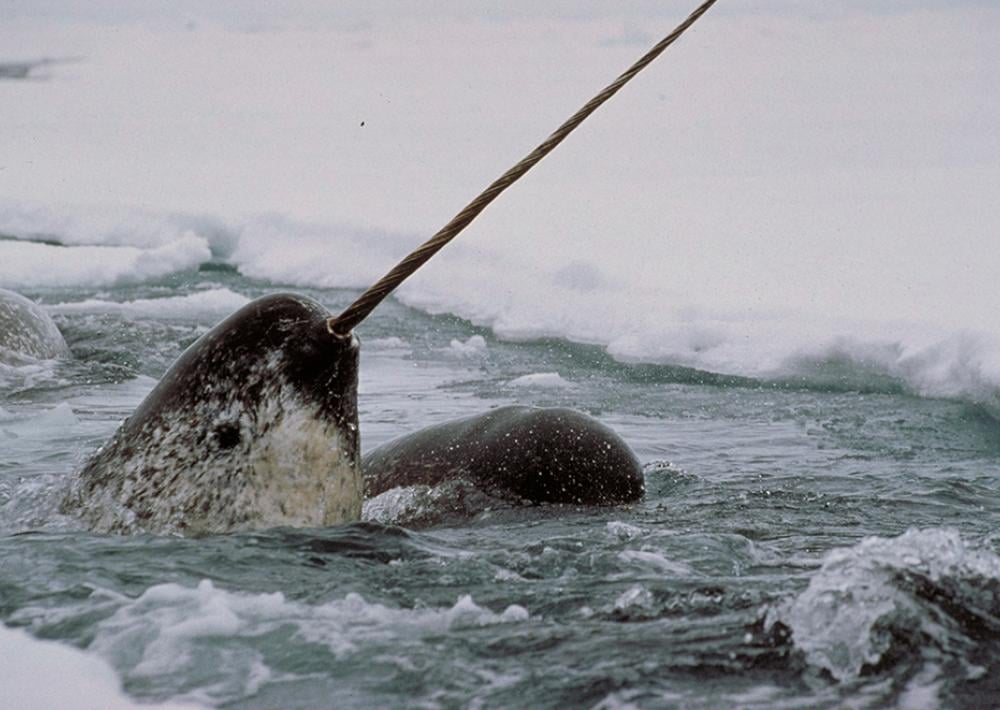Jutting from the salted froth
your solitary canine
flashes in the midnight sun,
revealing wrinkled rivulets
that labour under our insignia;
ivory forget-me-nots
of all that we have done.
A snaggletooth spiralling
perpetually to the past;
piercing broken seas
with collective memories
of every tainted taste
of every missing meal
of every single slight
that we have visited
on your presence
and in
our name.

This poem is inspired by recent research, which has found that narwal tusks reveal mercury exposure related to climate change in the Arctic.
Narwhals are mid-sized whales living in the cold waters of the Arctic Circle near northern Canada and Greenland. They grow between 4 and 6 m in length, with male narwhals possessing a giant spiralled tooth that projects from their heads, and which can reach up to 3 m in length. These tusks grow continually to replace wear, and just like rings in a tree trunk, every year a new growth layer is added to the narwhal’s tusk. Because the tusk is connected to the rest of body through blood, each new layer records aspects of the animal’s physiology, including information on what and where the animals have eaten each year and exposure to contaminants from human activity.
Heavy metals like mercury and other contaminants accumulate at each link in the food chain; the higher in the food chain a particular species is, the more mercury is accumulated in the body throughout its lifetime. Being near the top of the food chain, the narwhal is thus particularly vulnerable to mercury accumulation. In this new study, researchers were able to use the natural growth layers in the tusk of male narwhals to document yearly changes in diet dating back to the 1960s, finding that changes in diet and mercury exposure correlate with loss of sea ice in the Arctic. For example, in the 1990s the narwhals were found to have accumulated smaller quantities of mercury due to changes in the populations of sub-Arctic and Arctic fish brought about by rapidly declining sea ice levels in this time period. This meant that the narwhals were forced to change their diet from species of fish such as halibut and Arctic cod to capelin and polar cod, which are further down in the food chain and are thus lower accumulators of mercury. However, since the turn of the century, the amount of mercury in narwhal tusks has increased significantly, surpassing the historical accumulation rate, and potentially pointing to a significant increase in human pollution in the Arctic from activities like mining, coal power production, cement production, and waste incineration. These findings show that each layer of the narwal tusk offers valuable information on the animals’ living conditions and a window into developments in the Arctic region. Researchers are now hoping to use older narwhal tusks from the archives of museums to figure out how these mammals have been coping with mercury and climate change over even longer spans of time.
Fascinating that so much information can be identified from such a tooth. Amazing.
Thanks Beth! It is pretty incredible how much we can learn from these amazing creatures. 😀
And apparently you need not kill them to get a sample. I really do hope.